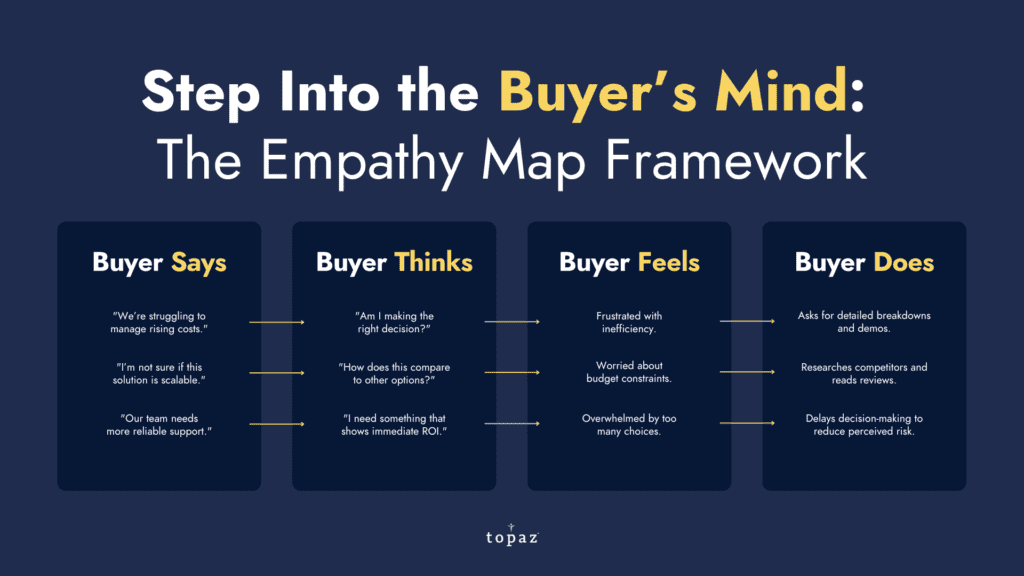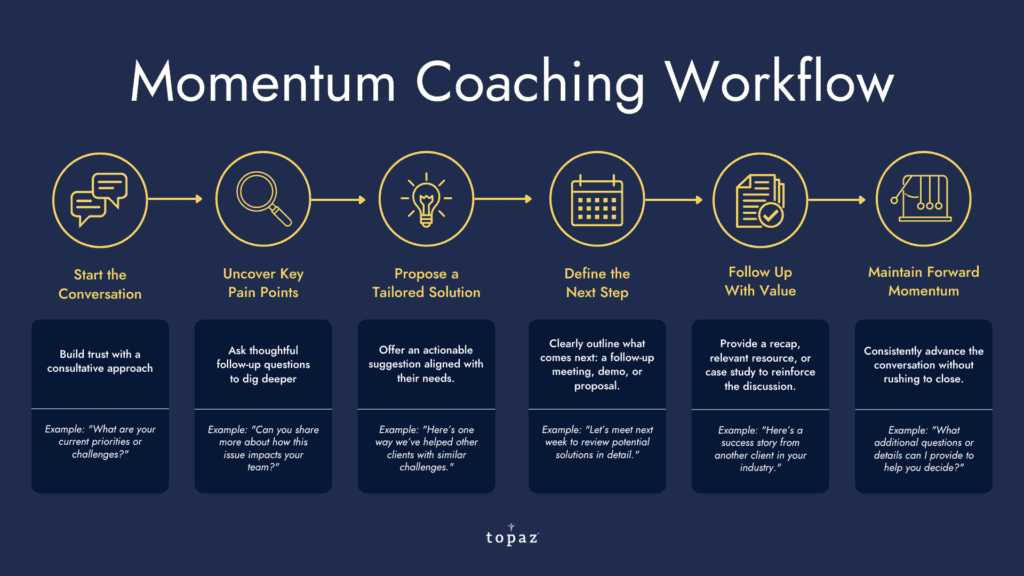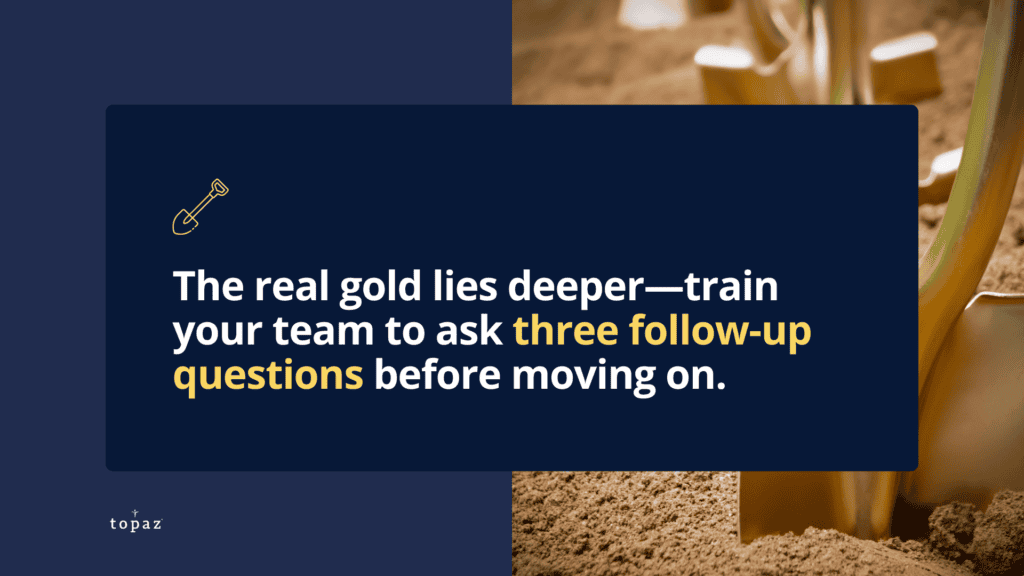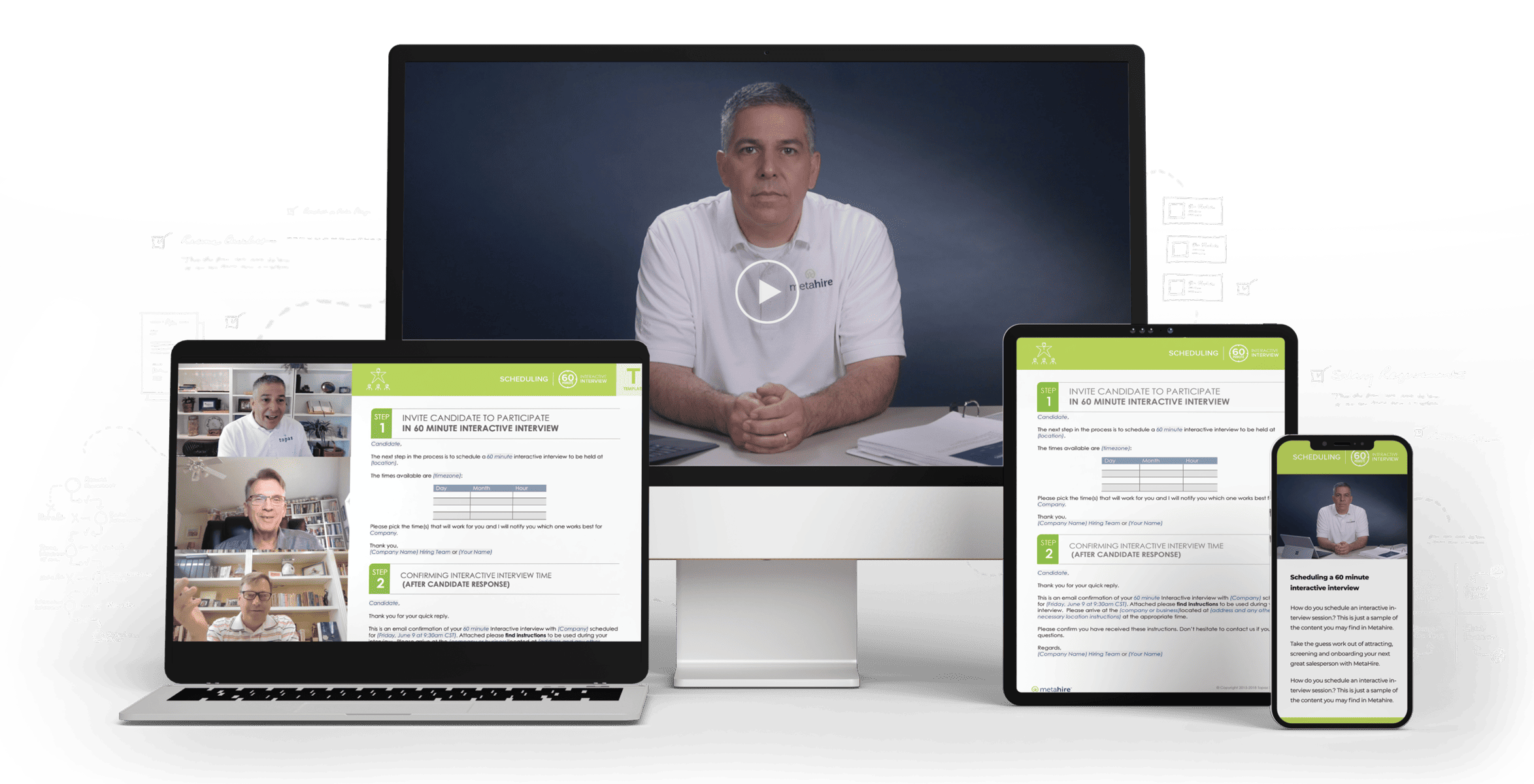Sales coaching is often misunderstood. Too many think it’s about micromanaging or hammering reps with outdated closing tactics.
But here’s the truth:
Sales coaching is about transformation. It’s about empowering your team to think, act, and sell differently — starting with the mindset and skills that create real results. After all, an empowered sales team is an effective sales team.
So, where do you even begin? While our Topaz sales leadership framework works for our clients, we recognize that sometimes, you need to push beyond your comfort zone (even more than we already push you) to try new things that may (or may not) work for your business.
Here are seven sales coaching secrets that, while they’re not core to our sales leadership programs, have the potential to supplement and supercharge your team’s approach to every conversation, relationship, and deal.
1. The “Empathy Map” Framework

In our sales leadership training, empathy is a core part of our offering. But if you’re looking for additional ways to establish a culture of empathy in your sales team, the empathy map could be a great next step.
What if your team could step into the buyer’s mind, feeling what they feel and seeing the world through their eyes? This is precisely what the Empathy Map does. We’re just redefining it for sales instead of its traditional use case in UX.
Beyond defining a buyer persona, this approach uncovers emotions, frustrations, goals, and opportunities that your reps might have missed if they had stuck to pressure selling tactics.
Most salespeople hear surface-level problems but fail to dig deeper. This framework changes that. By mapping out what the buyer says, thinks, feels, and does, your reps ask better questions. They stop pitching and start listening, creating space for the buyer to reveal unspoken pain points.
Here’s how to make this framework work for you:
↳ After every sales call, have your team sketch out an empathy profile.
↳Break it down into emotions, goals, frustrations, and opportunities. Review these in coaching sessions.
↳ Ask yourself more questions. Is your team missing signals? Are they pushing when they should be pausing?
Use these insights to sharpen their discovery skills and build stronger buyer connections. Remember, seeing the world through your buyer’s eyes is the key to unlocking better sales conversations.
2. Momentum Coaching: Prioritize Forward Movement
Sales often feels like a pressure cooker — close the deal, hit the numbers, rinse, and repeat.
Our philosophy is to always focus on relationships first, deals later. But here’s an example of something you can do as a sales leader that takes the idea of creating momentum in your sales team a step further.
But let’s flip the script. Momentum Coaching is all about progression, not perfection. It shifts the focus from “close at all costs” to advancing the relationship step by step. With coaching being one of the cornerstones of a successful sales leader, this is one you don’t want to miss out on.
This approach is unique because it relaxes your team. When reps stop obsessing over the close, they become more authentic and buyer-focused. They ask questions that matter, uncovering needs instead of rushing through a script.
But what does Momentum Coaching look like in action?

Momentum Coaching in action is about driving deals forward. It’s about training your sales team to always secure a clear next step in every interaction. This could mean scheduling that crucial follow-up meeting, providing a valuable resource, or simply confirming the buyer’s timeline.
But it doesn’t stop there. Coaching sessions magnify the importance of these next steps. Are they genuinely impactful or just surface-level? Do they align with the buyer’s journey, or are they missing the mark?
This is where the real momentum is built — in the constant analysis and refinement of your sales strategy.
Don’t worry if your team encounters bottlenecks as they perfect their sales process. After all, momentum isn’t about perfection but always moving forward. The takeaway? Don’t let perfect be the enemy of good. Just keep working to improve.
3. The 5-Minute Call Breakdown
Let’s be honest: sales reps hate long feedback sessions. They don’t want a 30-minute lecture on what went wrong.
We already focus a ton on role practices, 1-1 coaching sessions, group feedback sessions, and more in our Buyer Facilitator and Sales Leadership training, but here’s an interesting way to approach feedback if you’re still struggling to get your sales reps to learn from their mistakes.
This is where the 5-minute call breakdown comes in. It’s quick, actionable, and effective.
After every call, the rep summarizes three things: what worked, what didn’t, and what they’d do differently next time. This rapid feedback loop keeps them engaged and self-aware without overwhelming them. It heightens awareness around whether they’re approaching their customer conversations with a short-term gain approach or a long-term relationship approach.
Encourage reps to record or jot down their thoughts immediately after a call. During coaching, use these breakdowns as a starting point. Keep it short, focused, and collaborative. The goal is to build confidence — not critique every misstep.
“Why does this work?” you ask?
This technique shifts ownership to the rep. Instead of waiting for you to point out mistakes, they learn to self-reflect. Over time, they’ll start spotting patterns and improving on their own.
4. “Silent Objection Spotting” Training
Buyers don’t always say what they’re thinking. In fact, their biggest objections are often left unsaid.
It’s your job as a buyer facilitator (and, similarly, a sales leader) to ask (or encourage your team to ask) tough questions during the prospecting/discovery phases that uncover objections. But here’s the thing: sometimes, even after your best attempts to gather info, you’ll still be missing critical knowledge to help you reach the next step.
So here’s an interesting option for objection spotting earlier and more often — silent objection spotting.
This type of training teaches reps to read between the lines. Tone, hesitation, body language (if on video calls or in-person), and pacing reveal more than words ever could. A buyer’s silence might mean confusion, doubt, or resistance — and it’s your rep’s job to figure out which.
Now, granted, you can’t implement this training strategy in real-time cold-calling situations. Instead, simulate scenarios by role-playing calls with muted responses.
Encourage your reps to rely on non-verbal cues like pauses, shifts in tone, or abrupt topic changes. Afterward, discuss what they noticed. Over time, they’ll learn to pick up on emotional cues and respond with empathy. That’s how you transition from traditional sales to buyer facilitation.
5. Reverse Role-Playing for Discovery
Let’s say the role-playing from Silent objection spotting training doesn’t work. This is when you flip the script — or, should we say, roles.
The role practices we coach our sales leaders on are designed to run through real-world scenarios with their reps, with the primary goal being centered around the “practice makes perfect” mentality. The more at-bats you have testing out different ways of asking questions, receiving pushback, etc., the more likely you’ll be able to succeed in live sales calls. Typically, the sales leader plays the role of the buyer, with the salesperson playing themself.
But there’s another way you could try if you’re not getting the results you want. Enter Reverse Role-Play. Here, your salesperson plays the buyer.
Ask your salespeople to use their typical discovery questions while playing the buyer. Then, give them feedback as if you were the customer. Were their questions clear, thoughtful, and relevant? Or did they feel robotic and shallow? This exercise builds self-awareness like nothing else.
This switching of roles forces your team to experience the conversation from the other side. They’ll see how their questions land, how their tone feels, and how their approach impacts the buyer’s trust.
6. The “Why Not Me?” Mindset Shift
Salespeople often encounter a barrier of self-doubt. They witness others closing substantial deals and think, “Why can’t that be me?” This negative self-talk can hinder their performance and stifle their potential. While the “why not me” mindset isn’t necessarily core to the buyer facilitator process, it’s something else you can consider implementing on your team to help your salespeople overcome lack of confidence or stifled momentum.
The “Why Not Me?” mindset offers a powerful antidote to this self-doubt.
- It shifts the narrative from limitations to possibilities.
- It reframes challenges as opportunities for growth and development.
- For example, if a rep struggles with rejection, this exercise helps them see it as a stepping stone to resilience rather than a reason to give up.
There are numerous ways to implement this training technique within your sales team:
- Identifying and Addressing Perceived Weaknesses: Ask your team to list their perceived weaknesses. Then, brainstorm ways to turn those weaknesses into strengths. For instance, a rep who’s “too quiet” might be great at listening, which can be a valuable asset in sales.
- Role-Playing and Reframing Scenarios: Engage in role-playing exercises where team members can practice reframing challenging sales situations with a “Why Not Me?” mindset.
- Sharing Success Stories: Encourage team members to share stories of how they overcame obstacles and achieved success using this mindset.
This mindset shift is transformative. It empowers salespeople to take ownership of their potential and pursue their goals with renewed confidence and determination. By adopting a “Why not me?” attitude, sales professionals can unlock new levels of success.
7. Coaching With the “Third Question Rule”

Most salespeople stop digging after the first or second question, but the real gold often lies deeper. Great buyer facilitators will ask tons of questions throughout the process, but what if you’re struggling to find ways to insert yourself into the conversation to ask the right questions at the right time? Here’s an interesting option you can consider: the third question rule.
By training reps to ask three follow-up questions before moving on, you push them to uncover insights they’d otherwise miss. This technique also builds trust because buyers feel heard when reps take the time to explore their challenges fully. After all, a core part of being an effective buyer facilitator is asking the right questions early and often throughout the sales process to get to the root of a customer’s pain.
During role-plays or live call reviews, track how often your reps follow up. Challenge them to go deeper without turning the conversation into an interrogation. Over time, this habit will become second nature, leading to richer, more productive discussions.
Your Team: Engaged, Empathetic, Empowered, and Effective
When you focus on empathy, momentum, and intentionality, you create salespeople who aren’t just chasing quotas. They’re building relationships, solving real problems, and uncovering truths — even when those truths lead to a “no.”
Are you ready to change the way your team is coached? Contact us today, and let Topaz give your team a competitive edge.
FAQ: Sales Coaching Secrets to Empower Your Team
1. Are these tips part of Topaz’s core training offerings?
No, these are additional coaching strategies that sales leaders can experiment with to see what fits their team best. Every organization has a unique culture and approach to sales coaching, and while these techniques aren’t part of our core training, they offer alternative ways to develop your team. Some may align with your coaching style as you continue growing as a sales leader.
2. How can I implement these sales coaching techniques without disrupting my current sales process?
Start by integrating one or two strategies at a time into your coaching sessions. For example, introduce Momentum Coaching by ensuring each sales conversation ends with a clear next step. Use Silent Objection Spotting during role-plays to train reps to pick up on non-verbal buyer hesitations. Over time, these techniques will naturally enhance your team’s existing processes.
3. Can these coaching strategies work for both new and experienced sales reps?
Absolutely. New reps benefit from structured frameworks like the Empathy Map, which helps them better understand buyers, while experienced reps can refine their skills using techniques like Reverse Role-Playing or the Third Question Rule to enhance discovery conversations. The key is consistent coaching and adapting the strategies to fit each rep’s experience level.
4. How do I measure the success of these coaching techniques?
Success can be tracked through behavioral changes and improved sales conversations rather than just short-term metrics like deal closures. Look for reps who ask deeper questions, handle objections with confidence, and focus on relationship-building over transactional selling. Over time, these improvements should lead to higher-quality sales interactions and stronger customer relationships.







